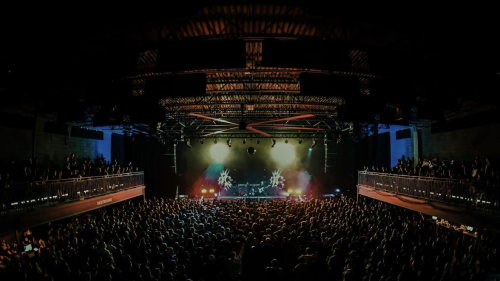Comm’on and join us for another Designing Chatt. Last month, we asked you what local building you wanted us to cover next. We heard you loud and clear, so let’s get into the history of Common House at 1517 Mitchell Ave.
Fast Facts
- Noogans that have been around a while will recognize Common House as the old Industrial YMCA building. Built in 1910, it was made to accommodate travellers on a budget — especially workers coming to Chattanooga by railroad.
- The building boasts ~30,000 sqft, 4 stories, and a terrace view of Lookout Mountain. At one point, it maintained 59 dormitories + hosted sock hops and socials.
- In 1992, it was welcomed into the National Register of Historic Places as part of the Market and Main Streets Historic District.
- Several plans were considered for the site — from condos to hostels — before 2020 brought us Common House.
- Devised to model other social clubs, Common House sets itself apart by focusing on inclusivity rather than exclusivity — as part of this effort, membership is open to people of all genders + walks of life and events are open to the public.
The design
Market + Main represents a hodgepodge of Mediterranean styles from the late 1900s. The Industrial YMCA building itself was built in the Spanish Revival style (think Hollywood Hills.) This differentiates it from the Commercial Italian and Art Deco design of its surroundings, according to the National Register. Common elements include:
- Low-pitched tile roofs with little or no overhang
- Smooth plaster (stucco) walls
- Courtyards, patios + porsche
- Iron ornamentation (think window grilles)
- Arches
All of which you can find at Common House.
Derek Sieg, who brought Common House to Chattanooga, wanted the building to feel lived-in, and kept most of the original structure — even added design elements were true to the building’s history. For example, the pool table, found by the designers on eBay, is a 1920s model made specifically for YMCA clubs at the time.
The big picture
Back when the Industrial YMCA was built, Chattanooga was a railroad town. Not to blow our own horn, but we were one of the most important railroad towns in the Southeast, industrially + strategically.
Steel, timber, and textiles all boomed in Chattanooga. It was important for workers to live near worksites downtown without cutting into their wages. Like the song goes, it’s affordable to stay at the Y-M-C-A.
Given this history, it’s fitting that the building’s current occupants are trying to make Common House a diverse, inclusive place, so that all Chattanoogans have a comfortable space to work, rest, and socialize.
Poll











